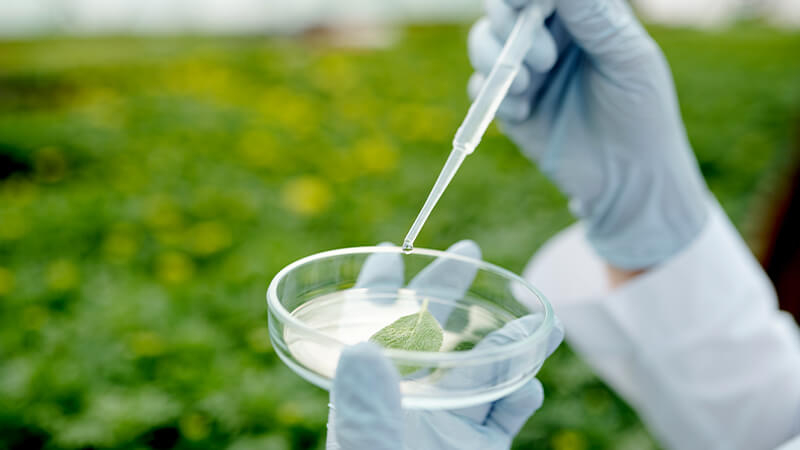There are numerous reasons why it is so important for the world of agriculture to keep ahead of the times – from increased global food consumption to the climate crisis. But what are the most prominent agricultural trends to look out for in 2023? Join us in exploring our ultimate top 10!
The agricultural industry is ever-growing, as new seeds of innovation are continually being sown. There are numerous reasons why it is so important for the world of agriculture to keep ahead of the times – from increased global food consumption to the climate crisis. But what are the most prominent agricultural trends to look out for in 2023? Join us in exploring our ultimate top 10!
1. Artificial Intelligence
There is no doubt that technological developments in the agricultural industry have risen to prominence in the last several years, which is only set to increase as we move further into the digital age. Artificial Intelligence manifests as many a household name in all areas of our lives – but how is it used in agriculture? Well, Artificial Intelligence, otherwise known as AI – robotic machines designed to efficiently copy human intelligence and behaviour – are used for a plethora of daily farming tasks, including: monitoring soil health, fighting pests and disease in crops, and assisting overall workload. The increase in global population has naturally led to an increased demand in food production, therefore the saying “many hands make light work” is more urgently true than ever (even if said hands are made of metal!). Learn more about the different types of AI in agriculture here.
2. Bioengineering
Advanced technology benefits the agricultural industry in many ways, allowing farmers to streamline their processes and find innovative solutions to daily issues. Bioengineering is no exception; this process consists of technologically advanced tools creating genetically modified products, through editing DNA and RNA. But why is this trending now? And how specifically does it benefit farmers? Biotechnology essentially allows farmers to create better, ‘ultimate’ produce, which is naturally more profitable. Not only can bioengineering increase crop quality, for example, it also has the potential to eradicate crop disease! In 2023, generating quality produce will be more vital than ever, due to increased demand across the globe.
3. Water Management
Population growth – and, of course, the devastating impacts of global warming – have also led to the necessity to monitor and efficiently manage our water usage. While the focus is naturally on maintaining the agricultural industry in the present day, this is equally about preparing for the future, where the global population is expected to spike. The rife demand for water has led to the exploration of different approaches to managing water in agriculture. For example, it has been established that 60% of global food production stems from “green water” agriculture. Therefore, there has been a shift in focus to rainfall harvesting and wastewater reuse. The global fight to preserve our water continues!
4. Regenerative Agriculture
The importance of water management also comes underneath the umbrella of regenerative agriculture, which focuses predominantly on soil health. The Rodale Institute claims that regenerative agriculture “improves the resources it uses, rather than destroying or depleting them.” In this day and age, where the importance of sustainability has been thrust into sharp focus, these core principles of farming are gospel! Regenerative agriculture can be achieved through planting a diverse range of crops, in order to feed different nutrients into the soil, rotating and covering crops, and generally minimising the application of chemical fertilisers. In a nutshell, ‘au naturel’ is certainly the way forward in 2023, and beyond!
5. Internet of Things
Our next top trend is another key example of advanced technology, and how it enhances the agricultural field. Have you heard of the Internet of Things? You likely will have, as such devices are prominent in everyday life: from your video doorbell to your smart car, and from your Apple watch to “Hey, Alexa!”. IoT devices in agriculture are specifically used to efficiently measure and monitor data - again, including that all-important soil health, and other factors such as equipment efficiency and weather conditions. In a nutshell, the data collected by IoT devices allows farmers to make well-informed decisions on a day to day basis.
6. Precise Nitrogen Applications
Nitrogen plays a pivotal part in crop growth and overall yield production - but it certainly isn’t cheap, nor particularly environmentally friendly! Therefore, in 2022, there has been increased attention-to-detail on the precision of nitrogen application, which significantly increases cost-effectiveness, a trend that that will likely continue well into 2023. This can be achieved through specific tools, such as a no-till drill or a drone, allowing nitrogen to be manually injected into the soil at an economically sustainable rate.
7. Drones
We figured that drones deserved a shout out of their own. Not only are drones ideal for tasks which require precision, they are also greatly efficient all-round. Drones are used to plant, seed, water and crop dust - with the latest available software also enhancing their ability to monitor crop and soil health. What’s more, the development of solar drones is another vital step in the right, sustainable direction.
8. Vertical Farming
Controlled Environment Agriculture has been proven to enhance plant growth, and vertical farming is an innovative method to look out for this year. So, what is vertical farming? Well, it essentially does what it says on the tin: it involves growing produce on vertically stacked layers. This tried and tested physical layout, paired with artificial lighting, results in a higher volume of food production. Why is this beneficial to the agricultural industry in this day and age? Not only does this allow farmers to keep up with the increased food demand, it also means that extraneous variables - such as weather conditions and disease - will not affect crop growth. So, everyone’s a winner!
9. Big Data
Analytics are of utmost importance in the agricultural world; they allow industry leaders and everyday workers alike to establish which processes are working, and which areas need improvement. With new technology (e.g. Internet of Things) allowing us to collect greater quantities of data than ever, there are numerous ways in which big data benefits the farming industry. For example, big data allows farmers to gain insight into factors such as rainfall patterns and water cycles, which, naturally, optimises crop growth.






